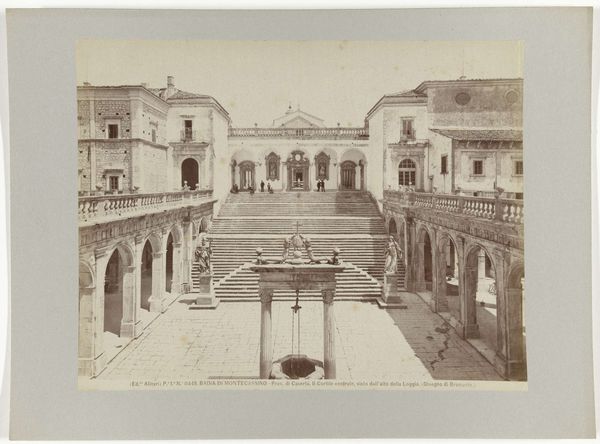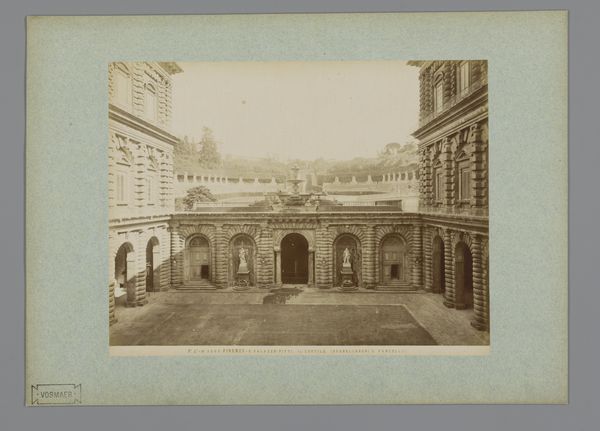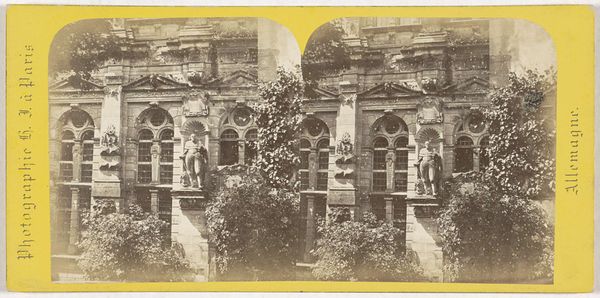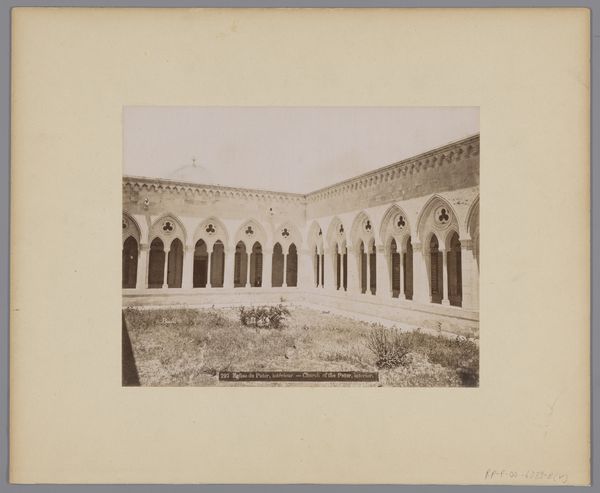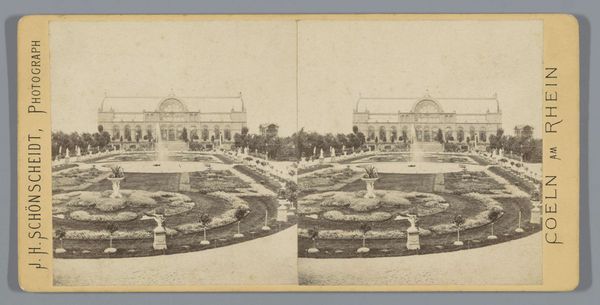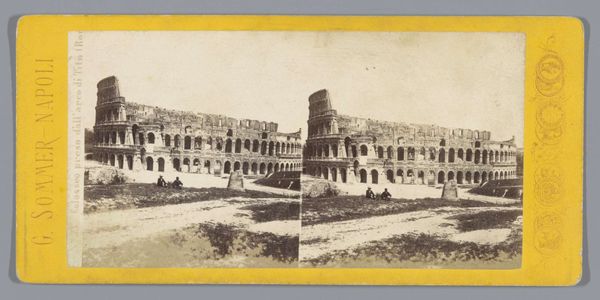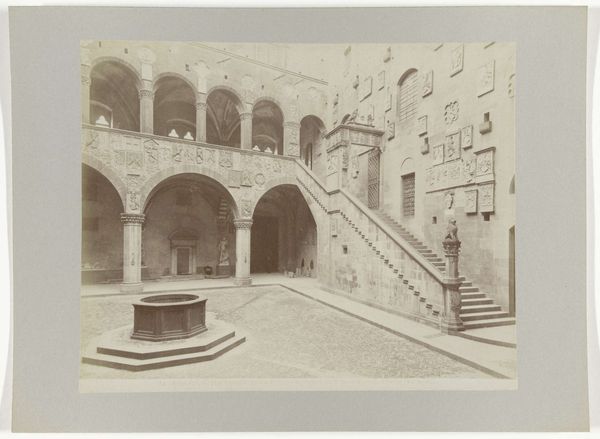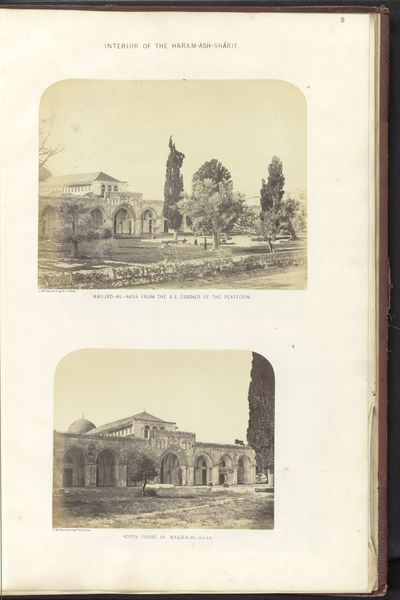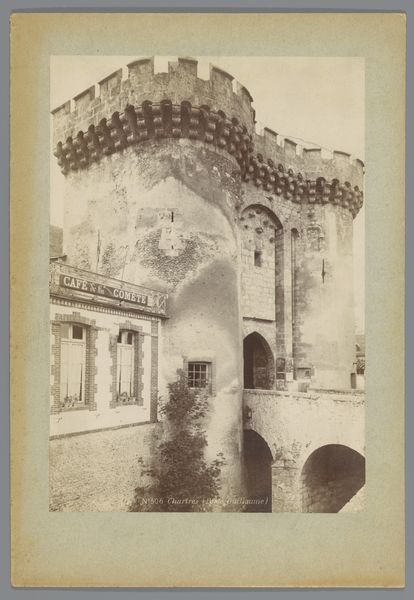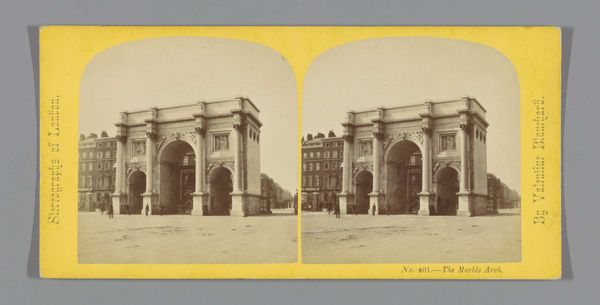
Kloostergang van het Hiëronymietenklooster of Mosteiro dos Jerónimos in Belém, Lissabon 1868 - 1890
0:00
0:00
print, photography, architecture
# print
#
landscape
#
photography
#
romanesque
#
architecture
Dimensions: height 85 mm, width 173 mm
Copyright: Rijks Museum: Open Domain
Curator: This stereoscopic photograph captures the cloister of the Jerónimos Monastery in Belém, Lisbon, sometime between 1868 and 1890. Note the vantage point, which is key to understanding this work as more than mere documentation. Editor: It's serene. The light and shadow create this peaceful rhythm as your eye moves through the arches and into the garden, even in monochrome. The symmetry emphasizes the building's groundedness, yet it almost feels ethereal because of that aged photographic print aesthetic. Curator: The very architecture of the Jerónimos Monastery, built in the Manueline style, represented Portuguese power and maritime exploration during the Age of Discovery. This image appears during a later period of photography's growth as it becomes a source for representing political power. These photos could disseminate images of Portugal’s glorious past and cultural relevance on a European scale. Editor: And look at the gardens. The layout is rigid, reinforcing this feeling of controlled space and imperial reach. In a place of supposed solitude and reflection, we see this very deliberate shaping of nature— a mirror, perhaps, for the shaping of ideologies. Were these images, created and collected, complicit in advancing a colonizing agenda? Curator: Absolutely, that tension is palpable. The monastery itself, initially populated by monks devoted to guiding sailors and praying for the king's soul, served a crucial function in the maritime expansion. Photography became a means to freeze such establishments in time. Editor: How do you think viewers today, removed from that initial intended audience, interpret images like these? The architectural beauty still captivates, of course, but I hope people also question whose stories are being told. It calls for understanding history through both a critical and an aesthetic lens. Curator: Precisely, and recognizing the evolving roles of the museum in shaping such historical narratives. Editor: Indeed, and the need for critical discourse in today’s landscape where this photograph offers an opportunity for understanding and resistance.
Comments
No comments
Be the first to comment and join the conversation on the ultimate creative platform.
